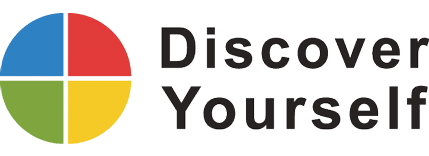Discover Yourself – Effective Listening

In business, learning to listen to others is a crucial skill, especially when working in management. Whether we’re speaking with our employees, our clients, or with the upper management team, we must strive to hone our communication skills in terms of both conveying information and taking information in.
Today we’re going to discuss an approach called effective listening, also known as active listening. We’ll also share some practical tips to improve active listening skills.
Do we really listen?
Most people think that they are a good listener. A study by William Haney from the 1970s asked over 13,000 people from various organizations to compare their listening skills with others who they worked with. The results showed that virtually every person thought that they communicated as well as or better than almost everyone else in their organization. Of course, this is not how averages work! In reality, a study by Husman and colleagues from the 1980s found that most people listen at just 25% efficiency. Other studies since then have found that we only take in about 25 – 50% of what we hear.
There’s obviously a big gap between us judging ourselves to be excellent listeners and the reality that we hear less than half of what is said to us. We tend to overestimate our listening skills in part because communication takes place between at least two people, making it difficult to gauge whether we are communicating effectively without input from the other party. Another issue is the lack of clear objective criteria for assessing whether communication has been successful. Overall, this ubiquitous overestimation suggests that while we all agree that listening is important, we also don’t generally feel a need to improve our own listening skills.
Why effective listening matters
This gap between how we perceive our listening skills to be and how our listening skills actually are can cause serious issues in the workplace and elsewhere. Managers should strive to understand the employee perspective as well as the information being shared, even if the method used to convey this information is somewhat less than crystal clear.
Effective listening not only helps to diffuse conflicts and deal with problems, it also helps foster a greater understanding between managers and employees. It allows us to hone in on the subtle cues that help us assess a person’s strengths and weaknesses, thereby allowing us to formulate positive responses that will be most effective in encouraging and motivating them.
What is effective listening?
What exactly is effective listening, and how is it different from regular listening? A study in the Harvard Business Review analyzed the behavior of nearly 3,500 participants and found common patterns of behavior among the most effective listeners:
- Effective listening requires active engagement, not just silence. Asking questions establishes a two-way dialogue with the speaker. If we sit in silence, it is hard for the speaker to know if they are being heard. But if we engage and asks for clarification or for more information, that demonstrates to the speaker that their message is clearly understood.
- Effective listening makes the speaker feel positive. When a person feels listened to in a positive way, their self-esteem rises. In effective listening, we should be supportive and convey confidence in the speaker, even when we don’t necessarily agree with what is being said. The aim of effective listening is not to challenge the speaker or their ideas, but to understand their perspective through the creation of a safe environment.
- Effective listening is cooperative. While it’s important to not listen in silence, it is equally crucial to pose questions in a way that is not combative or interrogative. We’re not trying to win an argument, but to cooperate in building a consensus of mutual understanding, even when there is disagreement between ourselves and the speaker.
- Effective listening is proactive. The fact that effective listening is cooperative and not combative doesn’t mean that we can’t provide feedback. In fact, one of the hallmarks of effective listening is providing suggestions to the speaker. When we feel listened to and respected, we become more receptive to suggestions than when those suggestions come from someone who has been combative or argumentative.
In summary, the HBR study found that effective listening is about more than passively absorbing information – it is about letting the speaker bounce their ideas off of us and creating an environment of mutual respect and cooperation.
Methods to listen effectively
Let’s take a look at some practical tips we can use to improve our effective listening while bearing the above points in mind:
- Maintain good eye contact. Doing so allows us to signal to the speaker that they have our undivided attention.
- Don’t interrupt. Let the speaker explain in their own time without jumping in while they are talking.
- Don’t just wait for the next opening to talk. It’s very common to become preoccupied with looking for the next opportunity to speak. Instead, we should always focus on the present and what’s being said.
- Don’t judge or require justifications. It’s okay to ask clarifying questions, be we should be careful to avoid putting the speaker on the spot to defend their position or otherwise suggest we need to be persuaded to listen further.
- Use open body language. Maintain forward-facing posture towards the speaker, nod as they speak, use confirmation words like “uh huh,” and smile.
- Repeat back to the speaker. One popular management technique is to confirm with the speaker. When they have finished, we can say “So if I’m understanding you, you’re saying that…”
Effective listening is critical for becoming a better manager. By implementing these techniques in our everyday communication, we can foster a more productive working environment among our employees, clients and peers.
Learn more about how using Insights Discovery can help you become a better listener, at www.discoveryourself.com
Check back soon for more posts on psychology and management!





